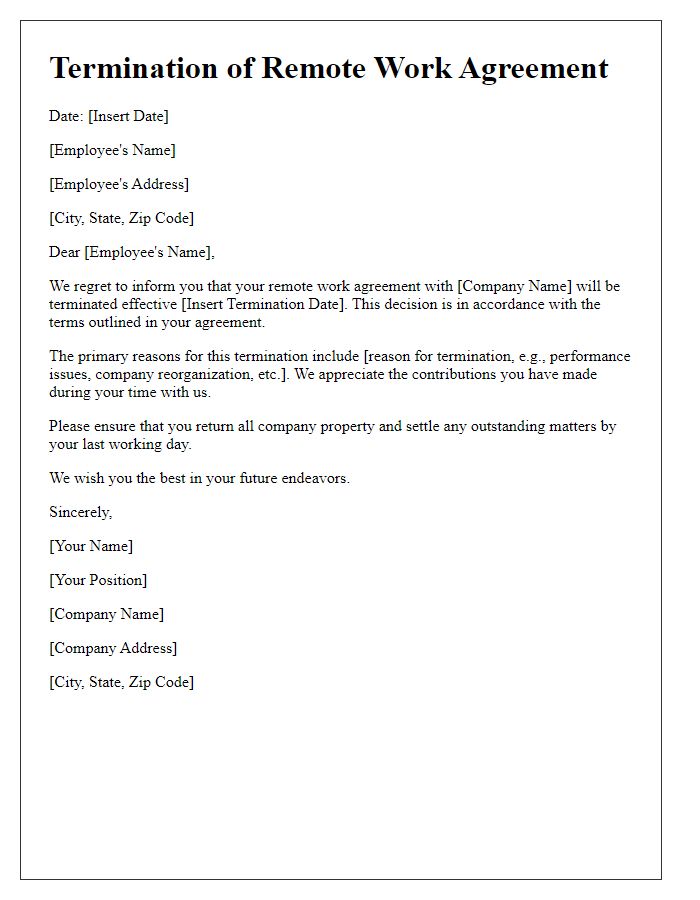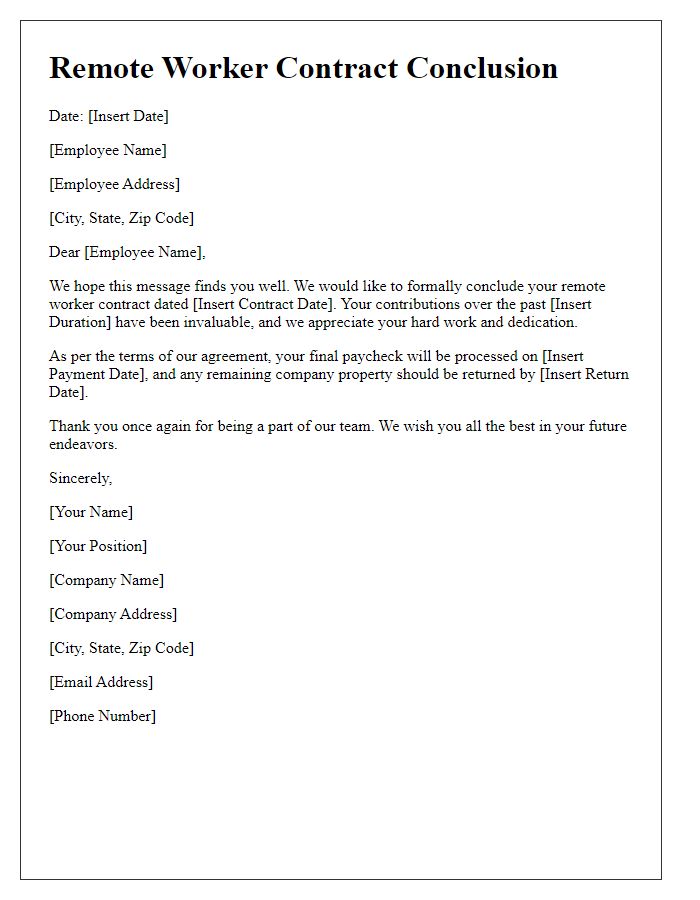When it comes to navigating the challenging waters of remote worker termination, clear communication is key. Writing a termination notice that balances professionalism with empathy is crucial for maintaining a respectful relationship, even in difficult circumstances. It's essential to convey the necessary information while also considering the emotional impact on the employee. If you're looking for a well-crafted template to guide you through this process, read on for practical tips and examples tailored to remote work situations.

Clarity in reason for termination
Termination notices for remote workers must convey clear and concise reasons for employment cessation. Common reasons include poor performance metrics (such as failing to meet project deadlines consistently), breaches of company policy (like inappropriate use of company resources), or lack of communication (missing scheduled team meetings). Factors such as specific incidents (for instance, repeated unexcused absences from virtual meetings) or performance reviews reflecting inadequate outcomes play crucial roles in justification. Keeping legal considerations in mind, clarity reduces ambiguity and supports professional standards in communication. Furthermore, including a timeline for the termination process, such as final pay dates and return of company property, ensures a smooth transition for both parties.
Legal compliance and company policy adherence
Remote worker termination notices must comply with legal standards (e.g., Fair Labor Standards Act) and align with specific company policies (such as performance metrics and attendance requirements). Documentation should clearly outline the reasons for termination, including any breaches of conduct (like failure to meet deadlines) or violation of remote work agreements. The notice should also inform the employee about final paycheck details, including any accrued vacation days and severance, if applicable. Providing a contact for questions (typically an HR representative) supports transparency and maintains professionalism throughout the process. Additionally, compliance with local labor laws (varying by state or country) is essential to mitigate legal risks.
Details of final compensation and benefits
Remote worker termination notices should clearly outline the final compensation details and benefits. Termination date specifies the last working day, ensuring compliance with employment laws. Final paycheck must include unpaid wages for hours worked, any accrued vacation time calculated based on state regulations (e.g., California's 72-hour payout requirement). Benefits should cover continuation options under COBRA (Consolidated Omnibus Budget Reconciliation Act), allowing former employees access to health insurance for up to 18 months. Retirement account information, such as 401(k) rollovers, should provide clear instructions for managing or transferring funds. Additionally, any severance pay (if applicable) should be detailed in accordance with company policy, including eligibility criteria and payment schedules.
Instructions for returning company property
Remote workers must return company property, including laptops and accessories, within five business days of termination notice. The return shipping label will be sent via email. Company-owned items, such as software licenses (e.g., Microsoft Office), should be uninstalled prior to return. Personal data on devices must be backed up by the employee, as the company will reset devices upon receipt. Schedule a pickup with the courier service provided by the company for efficient return processing. Non-return of property may result in further deductions as outlined in the employment agreement.
Contact information for further assistance
Remote worker termination notices must include clear details regarding the termination process, ensuring compliance with labor laws and company policies. Important elements include the employee's name, position, and the effective date of termination, typically provided in a formal communication. The notice should also outline any final compensation owed, including remaining vacation days or severance pay, and mention the return of company property, such as laptops or identification badges. Additionally, it's crucial to provide contact information for human resources or direct supervisors, ensuring employees can seek further assistance or clarification on the process. This transparency can help mitigate misunderstandings and foster a respectful conclusion to employment.













Comments